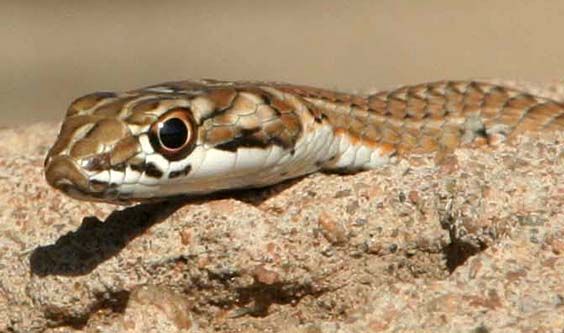

Rattlesnakes are, of course, the most popular of leave snakes. They are incredibly toxic and are organised in well-deserved regard. Proven above is the European Diamondback Rattlesnake. (USFWS picture by H M. Stolz--do not try to take images like this yourself!)
There are many types of rattlesnakes and sidewinders, and many of these venomous snakes are quite different from our typical view of what a rattlesnake looks like, based on the European Diamondback Rattlesnake. See our Pit Viper Collection for images and more information.
If you wish to recognize a particular sample, you should seek advice from a information such as Amphibians and Animals of European Northern The united states by John Stebbins. A variety of these snakes are described in the Animals area of the State of arizona ( az ) Environmental Area Solutions Workplace Picture Collection of the U.S. Seafood and Creatures Service.
Another venomous reptile discovered in State of arizona ( az ) and north western New Brazil is the Barrier reptile. Although these snakes have an incredibly effective venom, they are only 12-20 inches wide in total, with the normal reptile being only 14 inches wide lengthy. Because of their little dimension an mature would have to maintain a extended experience to be seriously damaged. However, kids enjoying outside may be drawn by the very colours of this reptile, choose it up, and be bitten; in that case the kid should be taken to a medical center instantly. A little storage system can help recognize the Barrier reptile from other tricolored snakes: "If red variations yellow-colored, it can damage a fellow; If red variations dark-colored, it's okay for Port." Useless to say, the best protection can be found in caution--just stay a safe variety away from snakes. (Photo above: State of arizona ( az ) Coralsnake by Mark Servoss, USFWS)
Arizona Hill Kingsnake, USFWS picture by Mark Servoss
The State of arizona ( az ) Hill Kingsnake described above is one of the non-poisonous tri-colored snakes that appear to be the coral reptile, but a close evaluation shows that the red and light artists are always divided by dark-colored artists.
The Common Kingsnake (shown above) is non shaded documents without red or yellow-colored artists. The design may differ in crossbands, lines, or speckles. This reptile is typical in the leave, mountain and shrublands and is dynamic during the day through most of the year. Kingsnakes are not venomous but destroy their fodder by constraint. Their diet contains animals, rats or rodents, wildlife and other snakes. They are able to destroy and eat toxic snakes because they are safe from venom.
The gopher reptile shown above is one of the biggest snakes in our variety, attaining a duration of as much as eight toes. These snakes are dynamic during the day in awesome climate and at night in summer. They are an resource in assisting management rats or rodents, since they eat a lot of them. When not searching, they will cover up under stones or in pet burrows.
Most of our other leave snakes are simple, such as the banded sand reptile, the western shovel-nosed reptile, the leaf-nosed reptile, shiny reptile, and the leave earthworms reptile.
Banded sand snake
Glossy reptile, USFWS Photo
The shiny reptile (Arizona elegans), shown above, varies from 2 1/2 to 4 1/2 toes in total and is a soothing inhabitant of the mesquite deserts of the free airline. Its unique overall look is designed by having sleek, shiny machines. It is normally a burrowing reptile, but can be seen traversing streets and other start areas in beginning night. It tracks for animals or little animals.
There is also a reptile discovered in southern State of arizona ( az ) that can swim in estuaries and rivers and lakes, sometimes even in livestock water tanks; this is the marine garter reptile, which zip fasteners through the water providing on tadpoles, frogs, toads and fish. Aquatic garter snakes may differ commonly in dimension from 16 inches wide to 48 inches wide lengthy. The infants are blessed in existence. They are about 5 inches wide lengthy at beginning and are able to look after themselves instantly. A very identical reptile, known as the Speaking language garter reptile, is extensive in Brazil and known in Speaking language as culebra de agua.
Snake attacks can be incredibly risky to family animals. The ASPCA provides the following guidelines to help keep your pet out of risk.
"A reptile chew is always regarded an urgent situation, because even a chew from a nonvenomous reptile can be risky,” says Dr. Safdar Kahn, Manager of Toxicology at the ASPCA Toxins Control Heart in Urbana, IL, who provides the following chew avoidance tips:
Walk your pet on a lead.
Steer your pet clear of lengthy low herbage, plants and stones.
Tidy up your garden by cleaning away undergrowth, toys and games and resources that are excellent covering locations for snakes.
Clean up built food, fruit or chicken seeds, which can entice rodents—and therefore snakes—to your garden.
A reptile can reach from a variety just like about 50 percent his bodily proportions, so if you see a reptile, return the way you came.
If you think your pet has been attacked, keep him relaxed by restricting his action.
If you think your pet has been attacked by a reptile, contact the ASPCA Creature Toxins Control Heart 24-hour hotline at 1-888-426-4435
The State of arizona ( az ) Environmental Area Solutions Workplace has images of many other local snakes. Simply select the on the Animals weblink on the far right of the images web page.

No comments:
Post a Comment